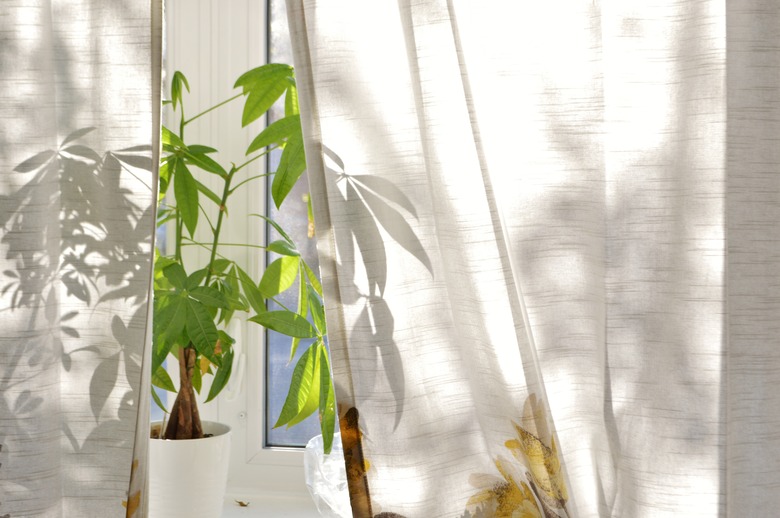How To Get Rid Of Insects That Are Eating A Money Tree
We may receive a commission on purchases made from links.
In a perfect world, money really would grow on trees. In the real world, the best you can do is enjoy Pachira aquatica, the money tree of legend that made a poor man rich from selling its edible seeds. Money trees grow as perennials in U.S. Department of Agriculture plant hardiness zones 10 through 12, and elsewhere, they're elegant houseplants grown for their glossy, green leaves. While pests rarely bother outdoor specimens, sap-draining insects and web-spinning mites target indoor money trees. Providing the right care or using organic pesticides can rid them all the pests.
Sap-Sucking Insects on Money Trees
Sap-Sucking Insects on Money Trees
Soft-bodied mealybugs are tiny, only about 1/20 to 1/5 inch long, but despite their size, you can often spot them on a money tree. The fluffy, white waxy layers shielding mealybugs from chemical pesticides make them easy to spot stealing sap from a money tree. The insects also excrete undigested sap as gooey honeydew, adding shine to the already glossy leaves. Severely infested trees may wilt, yellow and die.
Scale insects also piece the leaves and suck the sap from money tree plants. Soft brown scale insects disguise themselves as natural growths on a money tree, often going unnoticed. One way you can often spot scale insects is from honeydew, a sticky coating on the surfaces of the plant and floor near a scale-infested money tree.
Spider Mites on Money Trees
Spider Mites on Money Trees
Red spider mites are so small that only the damage they do to a money tree reveals their presence. Colonies of the eight-legged pests pierce the leaves and drain their cellular fluids, including chlorophyll. Infested leaves become dull and stippled before curling, yellowing and dropping. Fine webs draping their host is spider mite's definitive signature. Spider mites love warm, dry indoor winter air, so monitor money trees frequently during the colder months.
Cultural Control for Pests
Cultural Control for Pests
To dislodge mealybugs and spider mites, cover the money tree's pot and growing medium with a waterproof bag, take the plant outside and hose it down with a strong jet of water. Make sure you hit the backs of the leaves where they gather. If the weather's not cooperating, spray them off in the shower.
Manage small mealybug and scale populations by dabbing each insect with a cotton swab dipped in rubbing alcohol to remove them.
Prune off leaves heavily infested with scale insects and dispose of them in sealed plastic bags. To avoid spreading disease, disinfect your pruning tool by wiping the blades with a cloth soaked in rubbing alcohol between cuts.
Insecticidal Soap for Pests
Insecticidal Soap for Pests
With repeated use, an organic, ready-to-use insecticidal soap also labeled as a miticide controls all three of the pests. Move the money tree out of direct sun and cover the surrounding surfaces to protect them from drifting spray. If necessary, treat the tree in the shower or bathtub. Dress in the protective clothing and goggles.
Before spraying an entire plant, test-spray a small part of the plant and wait a couple of days to see if your plant adversely reacts to the soap. Distressed plants are often vulnerable to chemicals.
Spray until the soap thoroughly coats all the money tree's surfaces, including the backs of the leaves and the leaf buds. Insecticidal soap only works on insects that come into contact with it at application. Repeat every two to three days, or at the soap label's recommended frequency, until the pests are gone.
